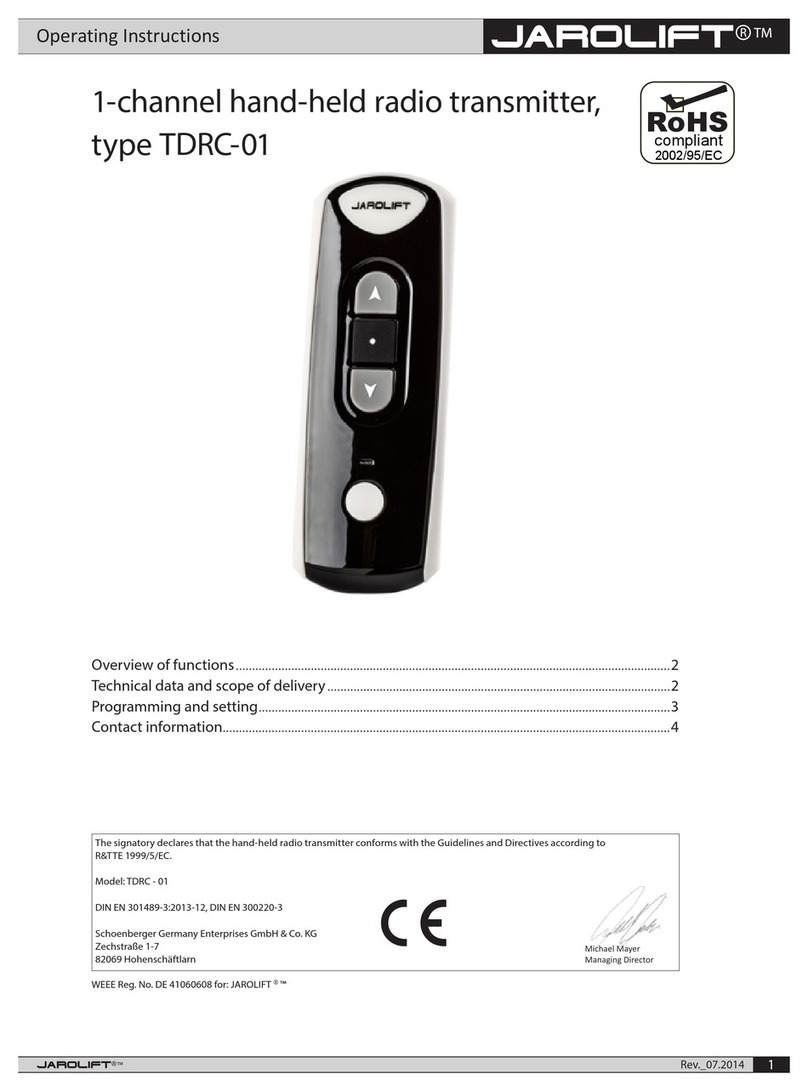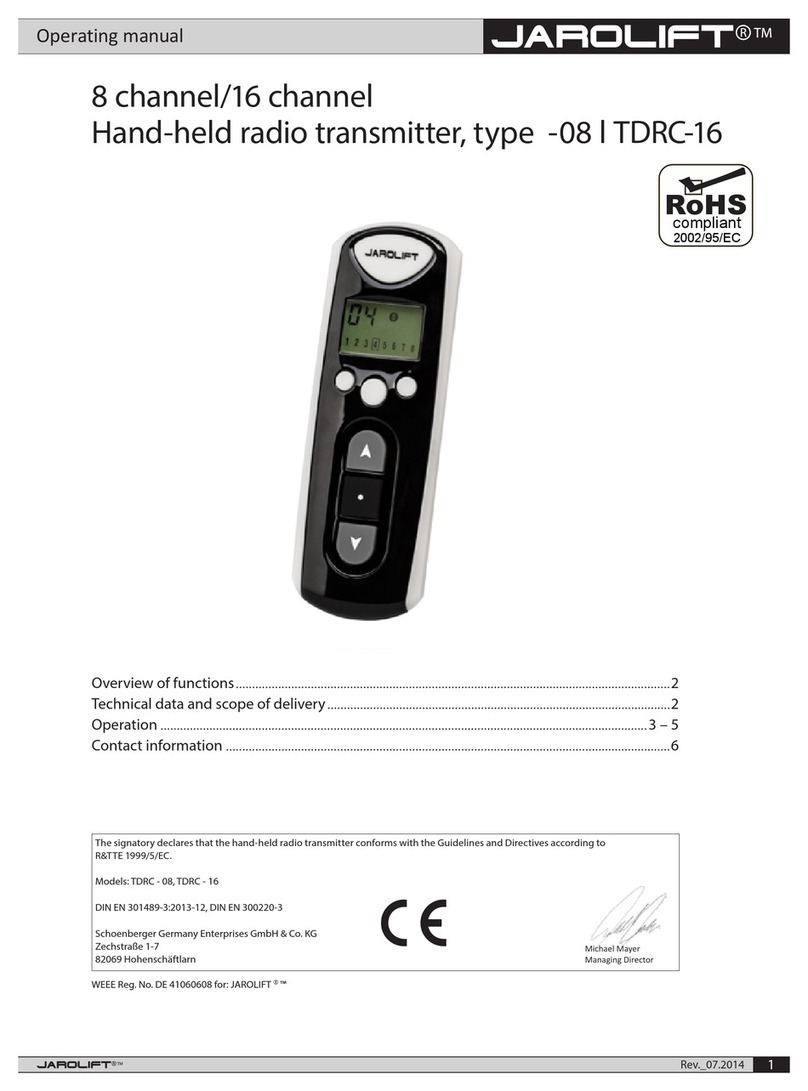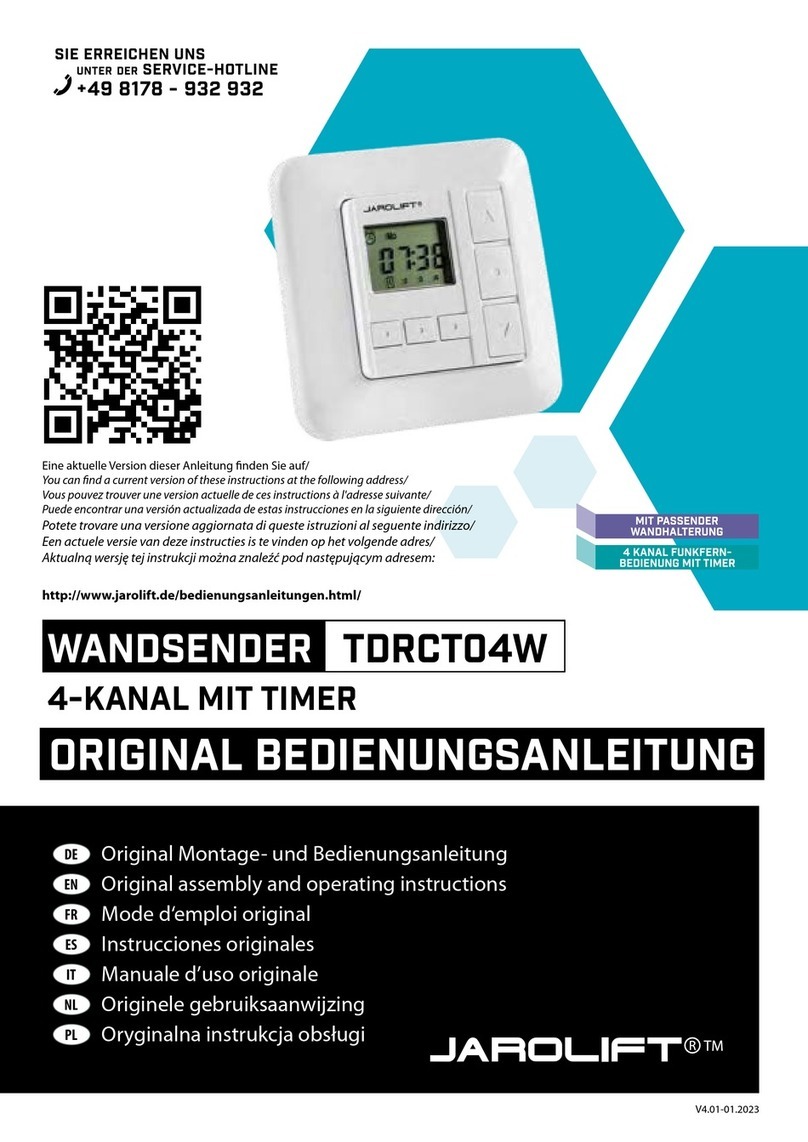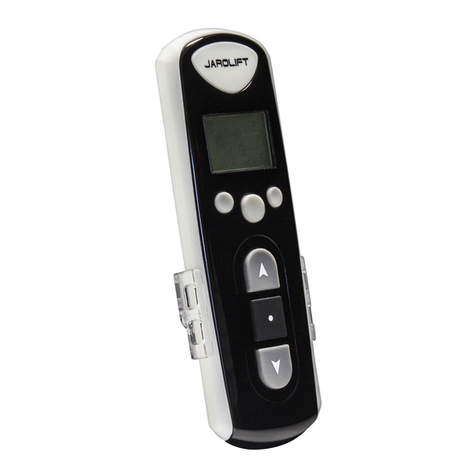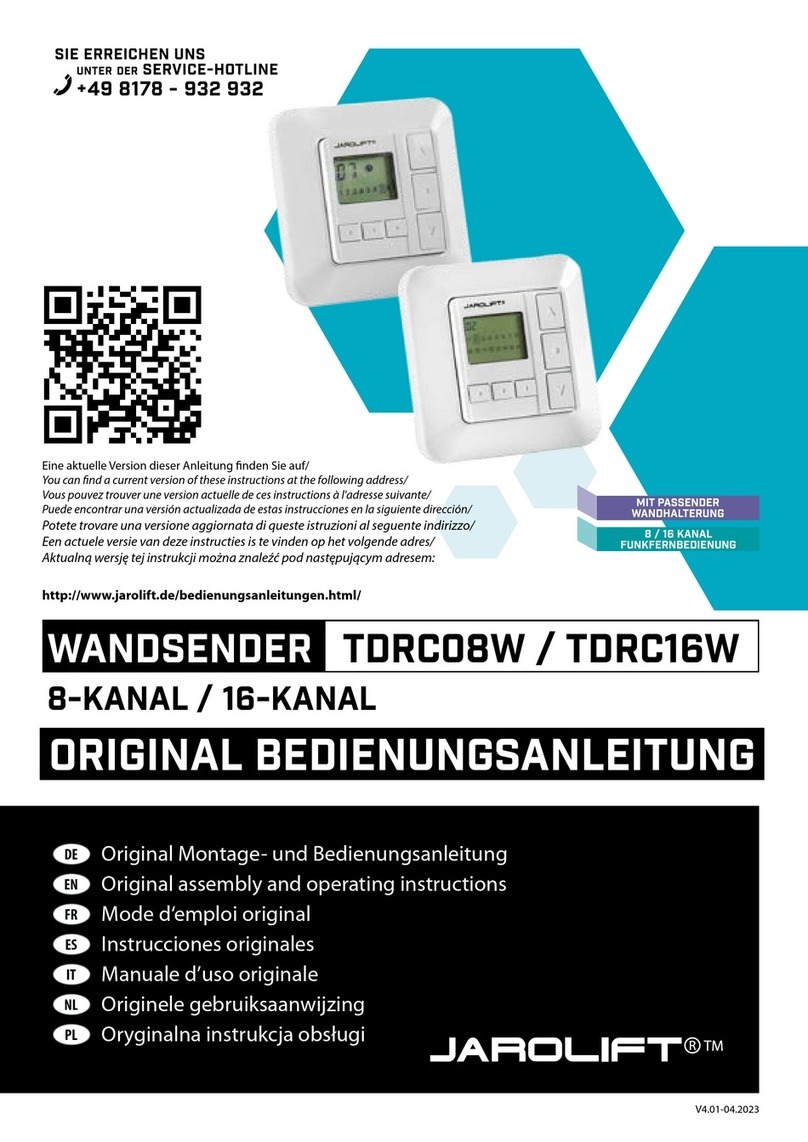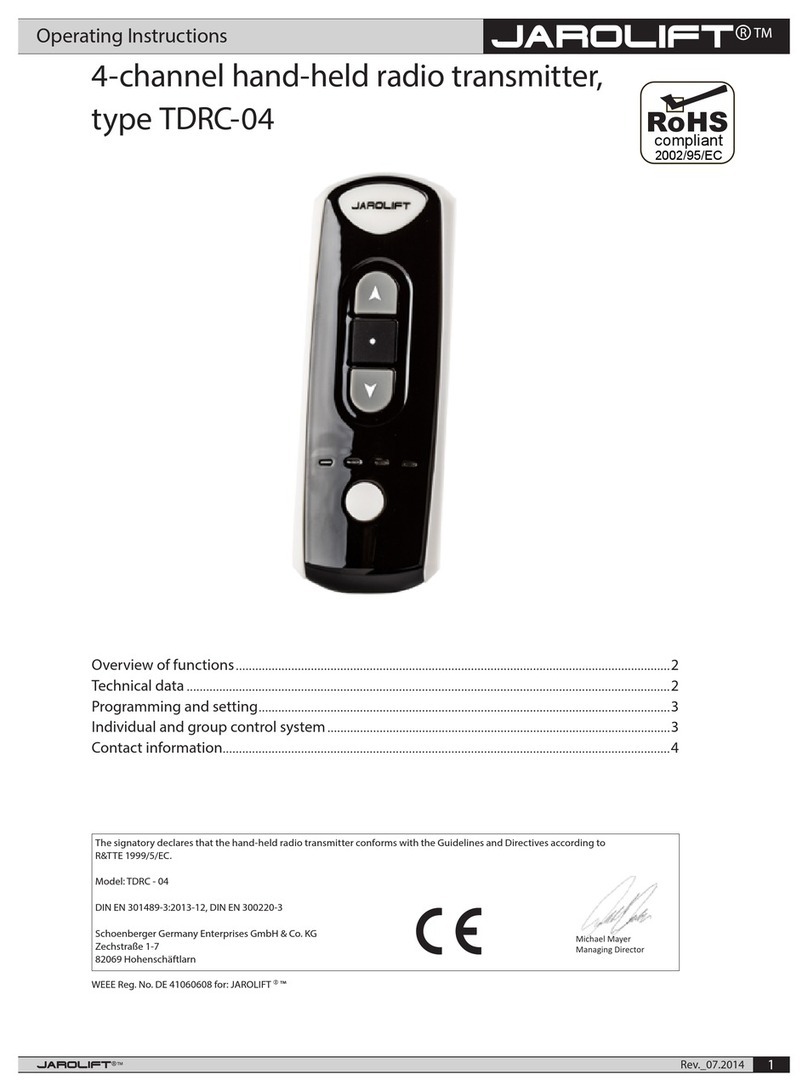
3
ALLGEMEINE SICHERHEITSHINWEISE
WARNUNG!
Wichtige Sicherheitsanweisungen!
• Für die Sicherheit von Personen ist es
wichtig, diese Anweisungen zu befolgen!
• Bitte bewahren Sie die Anleitung auf und
übergeben Sie diese bei einem Besitzer-
wechsel an den neuen Besitzer!
• Dieses Gerät kann von Kindern ab 8 Jah-
ren sowie von Personen mit verringerten
physischen, sensorischen oder mentalen
Fähigkeiten oder Mangel an Erfahrung
und Wissen benutzt werden, wenn sie
beaufsichtigt oder bezüglich des siche-
ren Gebrauchs des Gerätes unterwiesen
wurden und die daraus resultierenden
Gefahren verstehen.
• Kinder dürfen nicht mit dem Gerät spie-
len.
• Reinigung und Benutzer-Wartung dürfen
nicht von Kindern ohne Beaufsichtigung
durchgeführt werden.
WARNUNG!
Der mit dem Funksender gesteuerte Mo-
tor muss während der Reinigung, War-
tung und des Austauschs von Teilen von
seiner Stromquelle getrennt werden.
WARNUNG!
Bei Nichtbeachtung besteht Lebensge-
fahr!
Bei allen Arbeiten an elektrischen Anla-
gen besteht Lebensgefahr durch Strom-
schlag!
Beachten Sie die Anleitung und Sicher-
heitsanweisungen des mit dem Sender
angesteuerten Antriebes / Empfängers
sowie die entsprechende Anleitung der
angetriebenen Rollladen- oder Sonnen-
schutzanlage!
Allgemeine Sicherheitshinweise
ACHTUNG!
Folgende Hinweise unbedingt beachten!
Die Reichweite von Funksteuerungen wird
durch die gesetzlichen Bestimmungen für
Funkanlagen geregelt und ist unter ande-
rem durch bauliche Gegebenheiten beein-
flusst.
Achten Sie bei der Planung auf einen aus-
reichenden Funkempfang. Dies gilt insbe-
sondere dann, wenn sich der Funksender in
einem anderen Raum als der Funkempfän-
ger befindet, und deshalb das Funksignal
durch Wände oder Decken dringen muss.
Installieren Sie die Funksteuerung nicht in
direkter Nähe großer metallischer Flächen.
Andere Sendeanlagen (z. B. Funk- Kopfhö-
rer, Babyphone, Funk- Wetterstationen),
deren Sendefrequenz mit derjenigen der
Funksteuerung identisch ist, können den
Empfang stören.
ACHTUNG!
Hinweise zu Installation und Anschluss
unbedingt beachten!
Bei unsachgemäßem Gebrauch besteht
erhöhte Verletzungsgefahr!
• Verwenden Sie die Funksteuerung nur
zum Anschluss an Rollladen-, Markisen
und Jalousiemotoren.
• Bringen Sie fest montierte Sender
(Wandsender) sichtbar an.
• Deaktivieren Sie die Funktion Automati-
sches Öffnen und Schließen der Sende-
einrichtung bei Schneefall, Vereisung
oder Frostgefahr, um Schäden am Motor
oder der angetriebenen Anlage zu ver-
meiden.
• Verwenden Sie nur Original-Bauteile und
Zubehör des Herstellers.
DE






